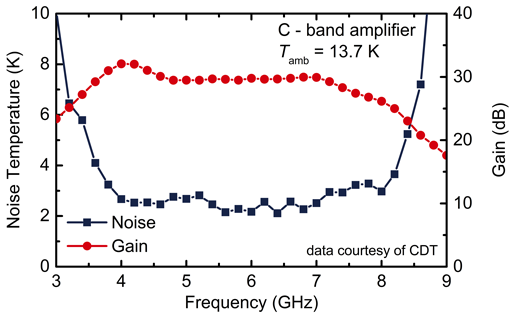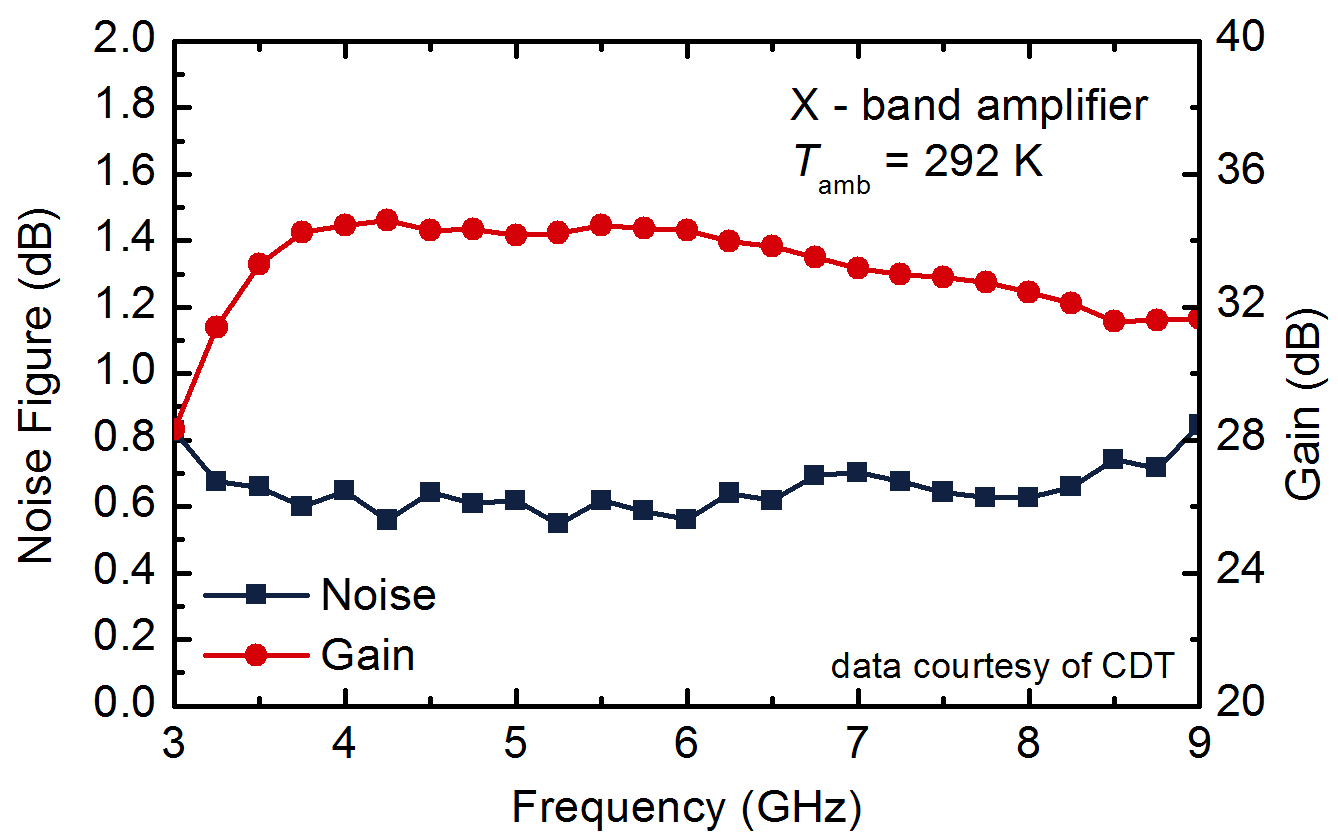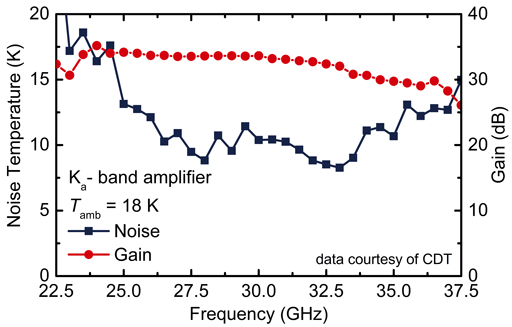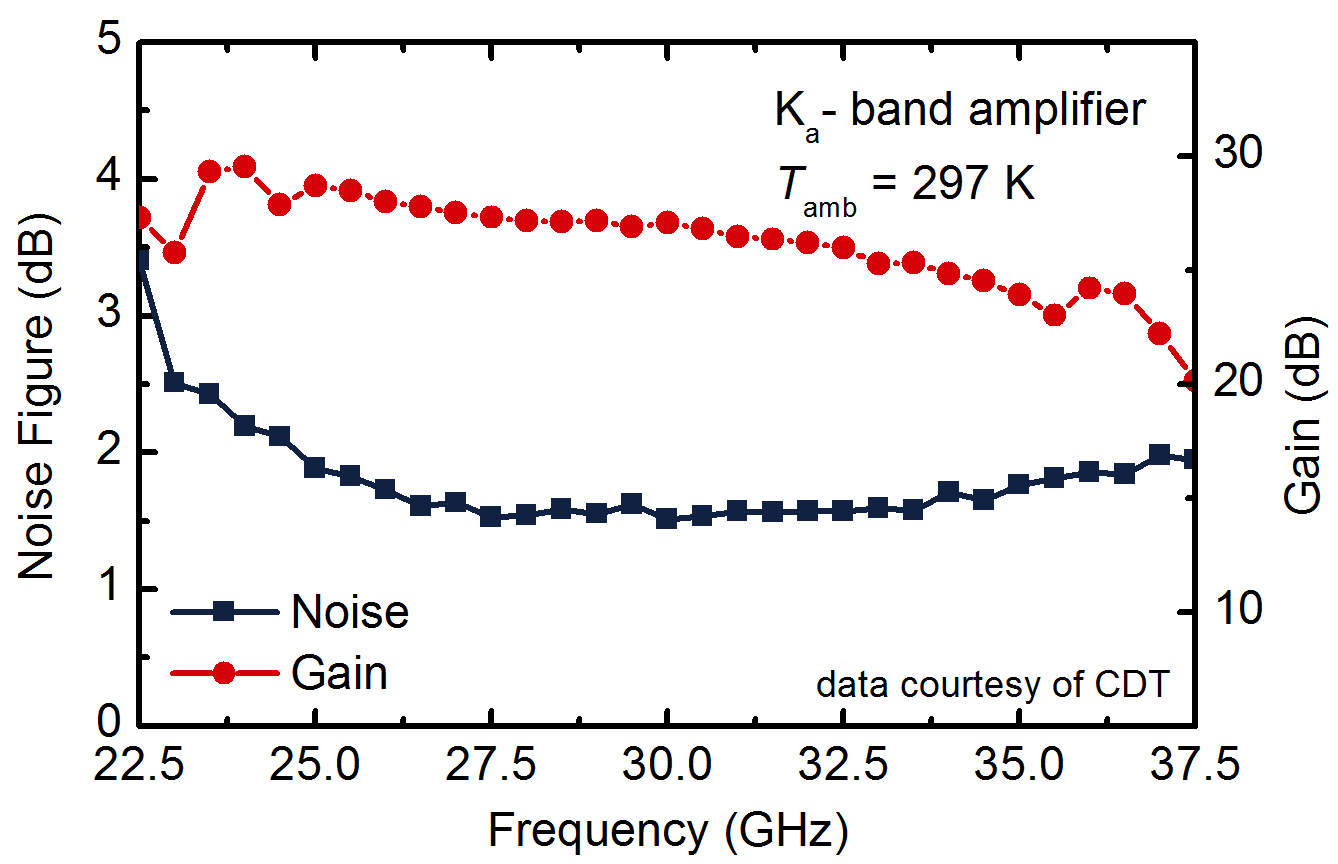Yebes Astronomical Observatory
As part of the National Geographic Institute (IGN) of Spain, the Center for Technology Developments (CDT) of the Yebes Observatory performs research and development on the topic of receivers. The key component of the receivers are the low noise amplifiers which CDT designs and assembles. The technology arising from these efforts is applied in their own 40-meter diameter radio telescope and shared with partner institutes across Europe by supplying them low noise amplifier modules.
One of the frequency bands of interest is the C-band spanning 4 to 8 GHz. Observations in this band can be used to gain information on the interstellar distribution of formaldehyde and methanol which leads to insights into the structure of the galaxy. The C-band low noise amplifier module developed by CDT consists of 2-stages. The first stage, which is most important for the noise performance, employs 2×75 μm pH-100 HEMTs. Averaged over the full band, the noise temperature is 2.6 K with an average gain of 29.5 dB at cryogenic ambient temperatures.

Even thought the LNA module was developed and optimized for cryogenic operation the performance at room temperature is still respectable with a noise figure of 0.62 dB averaged over the whole band.

For communication with probes on deep space missions the deep space network (DSN) employs frequencies in the Ka-band. CDT has developed a 4-stage low noise amplifier based on 4×20 μm pH-100 HEMTs in all stages. For the module with waveguide ports the average noise temperature over the nominal band is 10 K with a gain of 33 dB at cryogenic ambient temperatures.

At room temperature the Ka-band module designed and optimized for cryogenic operation exhibits an average noise figure of 1.6 dB over the nominal band.

